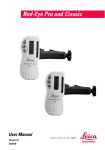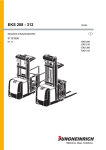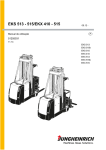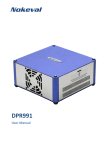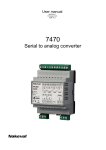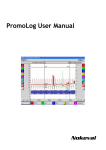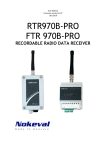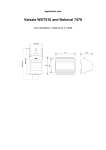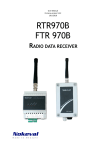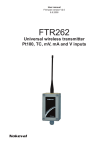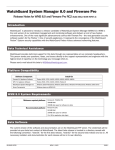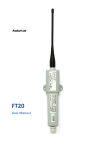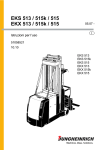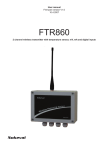Download BEAT10-T & BEAT10-RHT
Transcript
BEAT10-T & BEAT10-RHT User Manual ID6734 V2 11.2.2015 Firmware 1.1-1.1 Contents Introduction ....................................................................................................................................................2 Installation ......................................................................................................................................................2 Maintenance ....................................................................................................................................................8 Troubleshooting ..............................................................................................................................................9 Specifications ................................................................................................................................................10 Warnings ........................................................................................................................................................12 Trademarks ...................................................................................................................................................12 Manufacturer .................................................................................................................................................12 Introduction The BEAT10-T temperature transmitter and the BEAT10-RHT temperature and humidity wireless transmitters have been designed to blend with the interior design of most houses. The BEAT10-T measures temperature of indoor air and the BEAT10-RHT measures both temperature and relative humidity of indoor air. The transmitter is compatible with all Nokeval wireless systems and receivers. These transmitters are the perfect choice for applications where both the appearance and the cost of the device are critical. Using Nokeval wireless devices it is possible to cost effectively build even a large measuring network in existing buildings. Installation The BEAT10-devices are easy and fast to install without any cabling. White color and plain design fits for more demanding decorating taste. The transmission interval can be set between 5 seconds and 5 minutes, with 3 seconds step, individually for each transmitter just like in all Nokeval-transmitters. Preparations Before installing the devices, it is a good idea to make a plan of the target locations and their names. This plan makes it easy to write down the ID-number of each transmitter to each target during install. This makes start using the system easier. Please note that BEAT10-RHT model has two ID-numbers because the system has to see temperature and humidity measurements as individual devices. Installing BEAT10 devices is fast because of separate top and bottom enclosure structure. Please note that although the BEAT10-RHT measures not only temperature but also humidity, it must not be used in condensing environment where humidity condenses on the circuit board located inside the device. 2 - Introduction Changing the settings If you want to change transmit interval, read this chapter and also chapter Changing the settings and Settings, otherwise jump to chapter Maximum number of transmitters • • • • • • • Connect a DCS772 USB-POL converter to a USB port of a Windows computer. Attach a POL3PIN adapter to the connection cable of the DCS772. Connect the POL-3PIN adapter to pin-header J3 on the BEAT10 circuit board. Search www.nokeval.com pages with search term MekuWin and download the program. Install and start MekuWin. Select settings Protocol SCL, Baud 9600, Parity 8N1, Address 0 and click on Connect Direct. MekuWin connects to the device. Make the necessary changes to settings and save them. Detach the cables. Settings Period This setting defines the transmit interval. Allowed range is 5...255 seconds. Actual transmit interval depends on, to a certain degree, the ambient temperature. Default setting is Period 60, which is 162 seconds in normal conditions. This setting has direct impact on the battery life. Avoid using unnecessarily short transmit intervals as this causes shortened battery life and also limits the number of transmitters that can be used in the same coverage area. For more information on the effect of transmit interval to battery life, refer to chapter Battery. MovAvg When this option is on, moving average filtered results are being transmitted. This reduces flicker in the transmitted results but also increases the response time. The filtering is done over 10 most recent measuring results. By default this setting in on. 3 - Installation Maximum number of transmitters International radio standards limit the use of radio frequencies and limit the use of the license-free ISM frequency band that BEAT10 transmitters use. The maximum total number of Nokeval radio transmitters that can be simultaneously used in the same coverage area depends on the transmit interval. The following table shows the maximum number of transmitters with different transmit intervals and with different amount of repeaters. Transmit interval Only BEAT10 BEAT10 & Repeater BEAT10 & 2 Repeaters 5s 22 11 7 10 s 43 22 14 20 s 87 43 29 30 s 130 65 43 40 s 174 87 58 50 s 217 109 72 60s (1 min) 261 130 87 70 s 304 152 101 80 s 348 174 116 90 s 391 196 130 120 s (2 min) 522 261 174 240 s (4 min) 1043 522 348 Mounting location Radio technical perspective The BEAT10 typical indoor maximum range of 50…100 m depending on the number, material and thickness of obstacles between the transmitter and the receiver. The best range is achieved when there is a line-of-sight between the transmitter and receiver. In unrestricted open space (outdoors) the maximum range can be over 1000 meters. Walls and obstacles attenuate the signal and therefore reduce the range. Especially closed steel structures attenuate radio signals very effectively, and installation in or behind them should be avoided if possible. In the worst possible conditions, e.g. deep underground spaces, very thick reinforced concrete walls, bomb shelters, the range can be even less than 10 meters. However, most closed spaces or metal wall spaces have doors or openings of some sort, and these openings and the seals between them and the door, leak radio signals if the seals are made of nonconductive material, enabling installing transmitters to demanding positions. As a rule of thumb the device should be mounted with antenna positioned vertically which means positioning an unopened enclosure in a way that the type label behind it is facing downwards. The doors that leak the radio 4 - Installation signals usually have larger vertical dimensions than horizontal and thus leak the vertically polarized signal from the vertically mounted antenna more effectively. The antenna should never be installed flat against a conductive (metallic) surface. Direct contact of the antenna with a metal surface heavily attenuates the transmission and dramatically reduces the range. If possible, there should be an air gap of at least one or two centimeters all around the antenna. Practical experience has however shown that radio reception has been flawless from a transmitter completely covered in frozen vegetables for example. One more factor that affects the final transmission range and performance is the local radio interference and noise condition, caused by several different electrical devices. This should be seriously considered in heavy industrial installation sites or any sites with lots of power electronics around, for example power inverters and large electric motors. At least the radio receiver should be located as far as possible from this type of radio interference sources. In any case, it is worth considering the installation location from the radio technical perspective. Measurement perspective BEAT10-T and BEAT10-RHT must always be installed into the location whose temperature and/or humidity is to be measured, because the devices measure their own internal temperature. The device itself does not generate heat and therefore its internal temperature stabilizes very close to the ambient temperature. The mass of the device causes a certain amount of delay and filtering from ambient temperature changes. This is a designed feature that attenuates rapid temperature fluctuations that could cause false alarms in the temperature surveillance system. Causes of these rapid temperature fluctuations include opening doors, defrosting cycles, compressor operating cycles and persons moving nearby. The 90% of the temperature response time for BEAT10-T ja BEAT10-RHT is about 15 minutes. When choosing the installation location one must consider multiple effects affecting the temperature distribution in the space. If the space has no forced air circulation, air tends to layer such that cooler air is lower and warmer air is higher. Evaporators and fans blow cold air into their vicinity and on the other hand mix the air. Doors, vents, lamps and other heat sources warm up their surroundings. The device must be installed into a spot whose temperature follows as closely as possible to the temperature of the target products in the same space. Therefore BEAT10 should not be installed: • • • • • • • close to the floor or ceiling, onto the floor or ceiling, near the evaporator of a refrigeration unit, near the place where the cold/hot air flows from the evaporator/radiator, near a door or other opening and definitely not above one, close to a lamp or other heat source nor in a location where it is likely that the device will be covered up or get mechanically damaged. A good installation location is: • • • • on a wall as far away as possible from the door and the evaporator/radiator, at a height of about 3/4 of the height of the space, and where people rarely move about, and where air can freely move around. Opening the enclosure for installation Open BEAT10 by holding it from the base of the enclosure and pulling the cover of the enclosure from the middle. The enclosure will bend opening the latches in the edges of the enclosure and open the enclosure. Put the cover of the enclosure carefully to a safe place. 5 - Installation Attaching the enclosure base Set the enclosure base on the wall or some other suitable surface in a way that the narrow part of the screw holes of the base are facing up. Mark the holes to the (wall) surface and drill holes that suit for the material. The base screw holes are about 6mm diameter and the distance between the holes is 25 7mm. BEAT 10 will be installed through these holes by using screws with maximum of 3 mm diameter. Choose the material of the screws according to the material of the surface. Alternatively, on smooth surface you can perform attaching with a full base length piece of two-sided tape, which makes the holes unnecessary. Below there is a picture about the dimensions of the install holes. 6 - Installation Battery installation To save battery life BEAT10 is delivered battery removed. Install the delivered AAA type battery to the battery holder located behind the enclosure cover by obeying the polarity markings. The led over the battery holder should blink red light once to indicate the first radio transmission. Closing the enclosure Push the enclosure cover together to the enclosure base in a way that the antenna is pointing to the same way as the narrow part of the screw holes. 7 - Installation Maintenance Cleaning The BEAT10 enclosure may be cleaned with a soft cloth containing a small amount of water. The device is not meant to condensing environment (where humidity condensed to surfaces) or to be sunk into liquids. Battery General The AAA-battery needs to be changed when Ovaport-software reports so. To open the enclosure take a thumb and forefinger grip of the enclosure top and pull up and away from the enclosure base. Change the new battery to the place where the previous one was in a way that polarity does not change. Other regular service- or maintenance operations BETA10 devices do not need. Battery life Battery life depends on the selected transmit interval. In addition, ambient temperature affects battery life, which is considerably shorter than normal in very cold or hot environment. In the following graph battery life is presented with different transmit intervals in room temperature. The horizontal axle presents transmit interval as seconds and the vertical sensor presents battery life as years. Please note that with long transmit intervals, the estimated battery life is getting closer to the battery life in storage. The achieved battery life is also affected by battery age when it was first used and its quality and manufacturer. Above graph is made with Energizer Industrial EN92 battery. Calibration The device has no recommended calibration day, calibration service or online calibration certificates, but if you need any of these contact your local Nokeval distributor for alternative products that has these features. 8 - Maintenance Troubleshooting No radio reception. f the radio packets of this transmitter cannot be received and the operation of the receiving system has already been verified to work, then the following should be checked: Open the enclosure and observe that the red LED inside the device blinks every 2 minutes and 42 seconds, to make sure, that the transmitter is trying to send radio packets. If the above checks fail, connect for example DCS772 and POL3-PIN adapter to the POL header of BEAT10, launch MekuWin software and check the battery voltage from the menu. If configuration attempts fail, reinstall the old battery in its holder to rule out any contact disturbances and try configuring the device again. If the device still refused to answer to MekuWin, change battery to a new one and try configuring once more. If BEAT10 is working and the battery is found to be fine, then try reorienting or relocating it and/or the receiver to improve radio reception. For more information on this topic refer to chapter Installation > Mounting location. Erroneus readings. If the received readings are obviously wrong or intermittent, first check the condition and cleanness of the electronics of BEAT10. Check also that the temperature is within the measuring range of the transmitter. 9 - Troubleshooting Specifications Environment Storage temperature Operating temperature Relative humidity Protection class Case material Measurements Weight Dimensions Power source Battery type Capacity Battery life T-model Battery life T-model Battery life RHT-model Battery life RHT-model Radio transmitter Type Transmitter frequency Transmitting power Outdoor range Indoor range Antenna Compatibility Receivers Repeaters Software Conformity information EMC immunity EMC emissions R&TTE directive -40...+70 °C +5...+55 °C 5...95 %RH, non-condensing IP30 Plastic (ABS+PC) About 82g with a battery Width 26mm Height 340mm Depth 23mm 1,5 V type LR03 (AAA) alkaline battery, ”heavy-duty” 1200 mAh 1 year 1 month with 81 s transmit interval and Energizer Industrial battery. 2 years 2 months with 162 s transmit interval and Energizer Industrial battery.* 1 year with 81 s transmit interval and Energizer Industrial battery. 2 years with 162 s transmit interval and Energizer Industrial battery.* * = the device default Licence-free 433.92 MHz ERC/REC/70-03 sub-band f 433.92 MHz ISM-band Up to +10 dBm E.R.P. Up to 1000 m 50…100 m typical Integrated quarter-wave whip antenna in top part of the device Ovalink FT20 Receiver FTR970B FTR970B-PRO DPR991 MTR970 FT20 Repeater FTR960 Ovaport Promolog Mekuwin EN 61326 EN 61326, class B EN 300 220, class 3, transmitter power class 8 EN 301 489 EN 300 339 10 - Specifications Temperature measurement BEAT10-T & BEAT10-RHT Sensor type Measurement range Accuracy Step response Integrated Pt100 element +5…+55 °C ±0,5 °C in range +15...+35 °C ±1 °C in range +5...+55 °C 8,7 min 63 % 20 min 90 % Humidity measurement BEAT10-RHT Sensor type Measurement range Accuracy Step response Capacitive element 10…90 %RH non-condensing ±5 %RH in range +25 °C ±6 %RH in range +5…+50 °C 7,5 min 63 % 17,5 min 90 % 11 - Specifications Warnings Warning. This device contains a license-free ISM band (433.92 MHz) short range radio transmitter (SRD). Always observe local regulations concerning the use of such radio transmitters. Never start or use the device in areas with explosion hazard, or in areas where the use of radio transmitters is limited, such as airplanes, near medical devices, near flammable or explosive substances or close to sites where explosion works are being performed. Do not leave the device to direct sunlight or some other place, like to a parked car, where temperature can rise over +50 °C. With BEAT10-RHT device, do not touch the humidity component which is an open topped eight pin component located in the bottom end of the circuit board. The device is not meant to condensing environment (where humidity condensed to surfaces) or to be sunk into liquids. Read this manual carefully before using the device. Only Nokeval Oy authorized services may repair or modify the device. The device includes no user serviceable parts. The device must not be disposed with household waste. Observe local regulations concerning electronic waste recycling. The device contains a battery. Trademarks Any trademarks mentioned in this manual are the property of the respective trademark owners. Manufacturer Nokeval Oy Rounionkatu 107 FI-37150 Nokia Finland Phone +358 3 342 4800 (Mon-Fri 8:30-16:00) WWW http://www.nokeval.com/ Email [email protected], [email protected] 12 - Warnings












